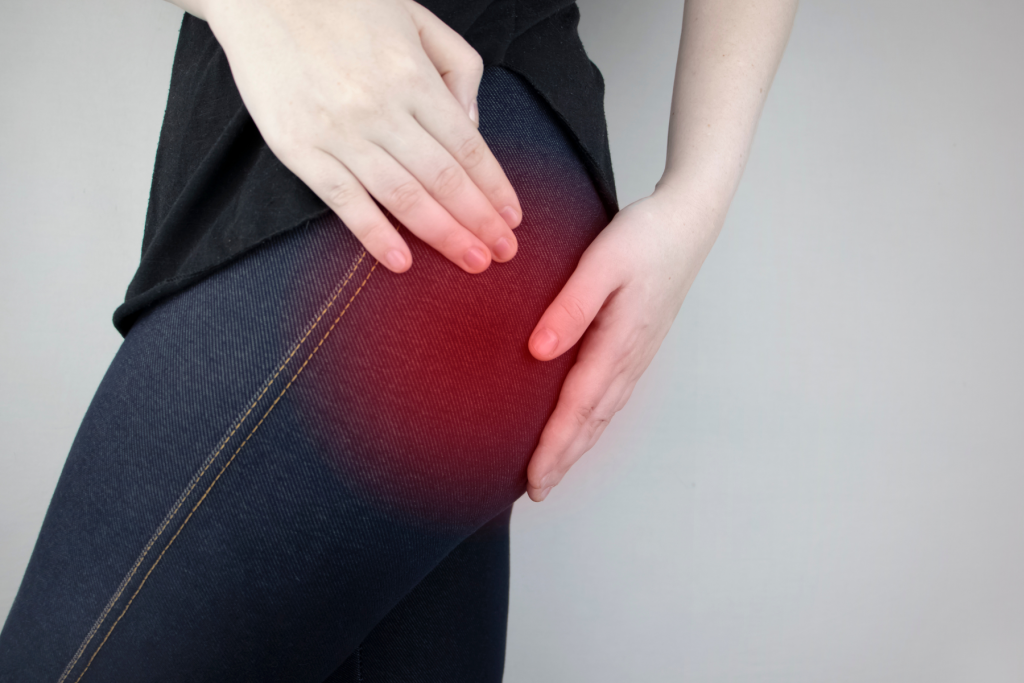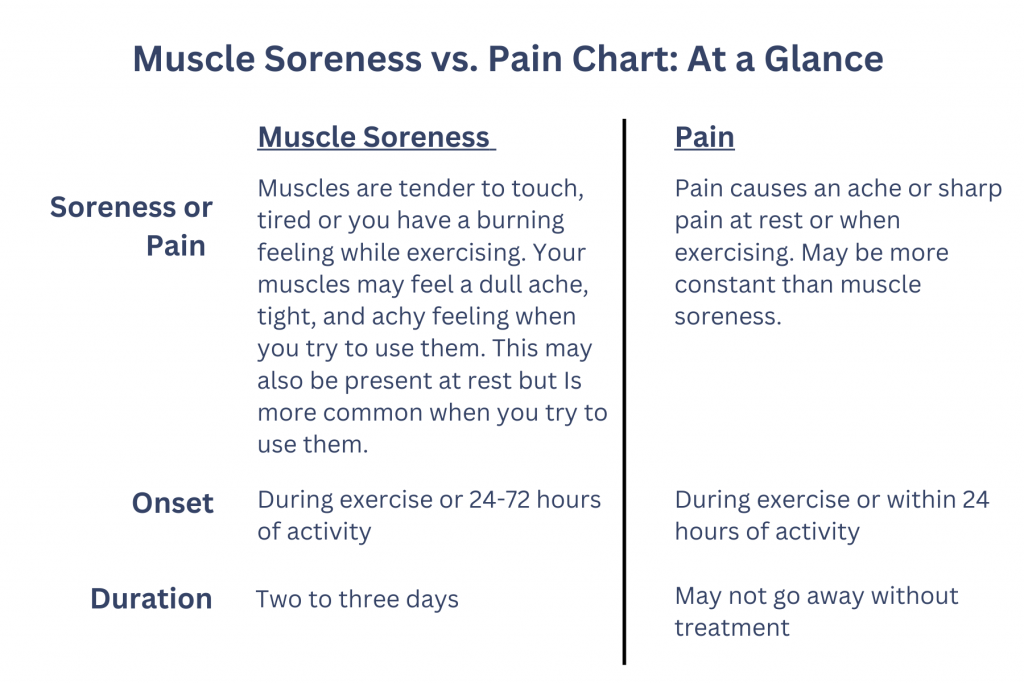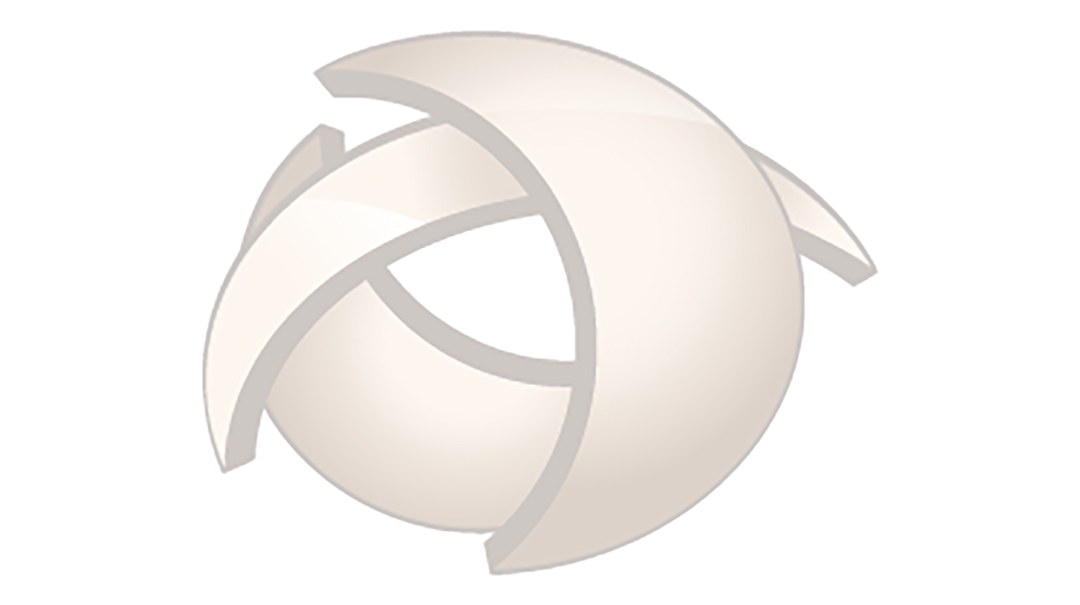Soreness vs. pain: what’s the difference?

As you start/continue your exercise program, here are a few tips to tell the difference between pain and soreness. There are many benefits to exercise. Physical activity benefits your physical, mental, and social health. Exercise improves sleep and helps you maintain strong muscles and bones. It also helps prevent or improve many chronic conditions, such as heart disease, diabetes, obesity, depression, and some cancers. When you exercise, you are putting healthy stress on your heart, lungs, muscles, and bones to gain strength or endurance. This good stress can cause normal muscle soreness and fatigue. Short-term muscle soreness is a healthy and expected result of exercise.
The good news is that normal soreness after a workout is not a cause for concern. Normal muscle soreness and fatigue peak between 24 and 72 hours after a muscle-stressing activity. It should go away on its own after a few days. But pain or discomfort that lasts may mean you have an injury.
The chart below shows the difference between muscle soreness and pain and we discuss some tips for managing both.

Muscle Soreness
Exercise soreness sometimes results from starting to use muscles that you have not used stressfully in a long time. This soreness is a result of small, unharmful “tearing/stress” on these unused muscle fibers. As the body repairs these small tears, muscles become stronger. Short-term muscle soreness is a healthy and expected result of exercise.
What To Do if You Have Muscle Soreness
During the recovery period, while you have soreness, it is important to:
- Give the muscles you worked time to recover. You are more likely to get injured if you continue with the same intensity and type of exercise too soon.
- Stay active and keep moving until the soreness decreases or goes away. Often improves with easy stretching and light movement. Total rest can increase soreness so while you recover, consider doing a different exercise or do your activity at a lower intensity or for less time during the first few days of soreness.
- Vary your activities. Work your legs, arms, and whole body on alternate days. This will help you keep moving and strengthen other muscles while allowing the sore ones to rest.
What To Do if You Have Pain
- Stop any painful activities and change what you do. Ice can provide short-term relief for pain caused by inflammation.
- Don’t push through the pain. Pushing through pain can cause the problem to get worse and lead to further injury.
- Seek help from a healthcare provider. If you have pain that doesn’t go away, even after 7 to 10 days, see your doctor or physical therapist for an evaluation and treatment.
How To Make Progress
Your body needs to do more than usual to make physical improvements. But you should make sure to increase your physical activity and exercise safely and slowly over time.
Each person has a different capacity to do sports and exercise. When you stay within a safe activity threshold, you should only experience normal muscle soreness. Our physical therapists can assess your strengths and weaknesses and if you have pain they can help get to the root of it. Give Meadowland Therapy a call if we can help you achieve your dreams!



